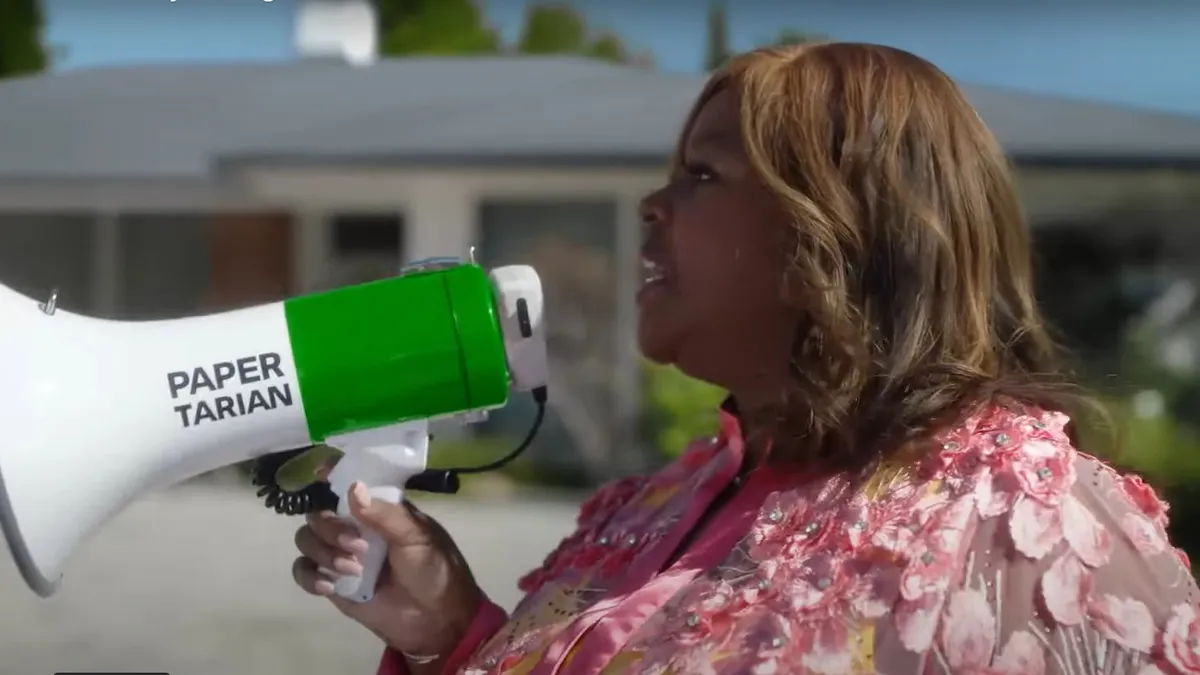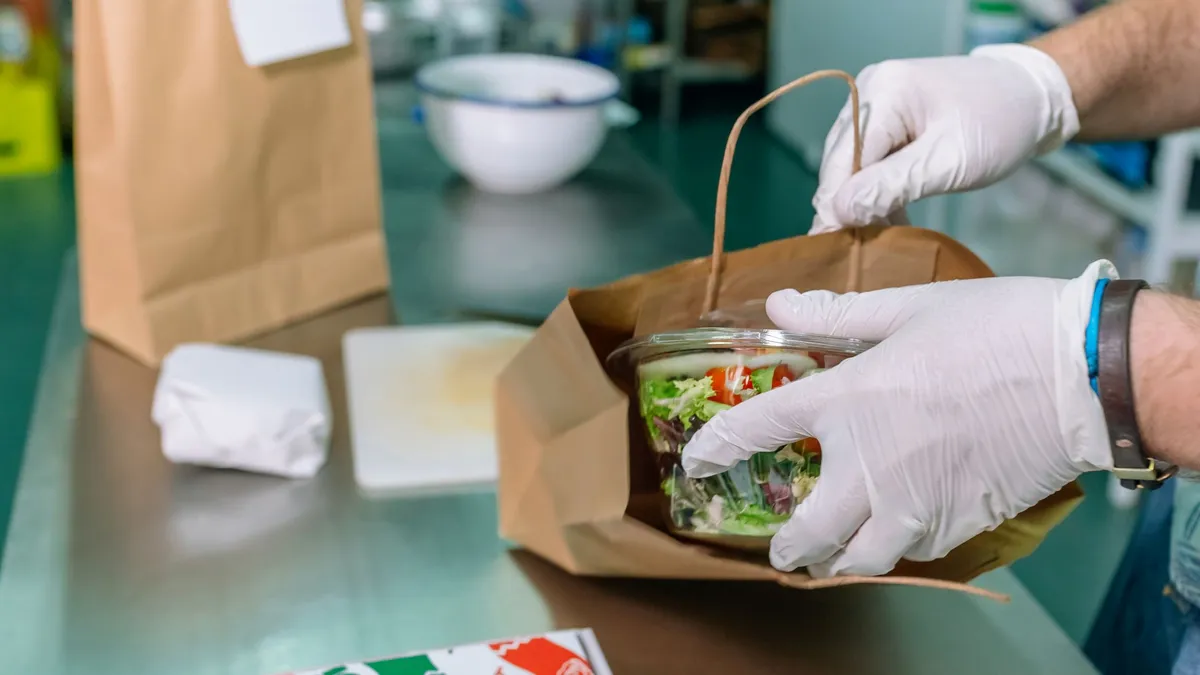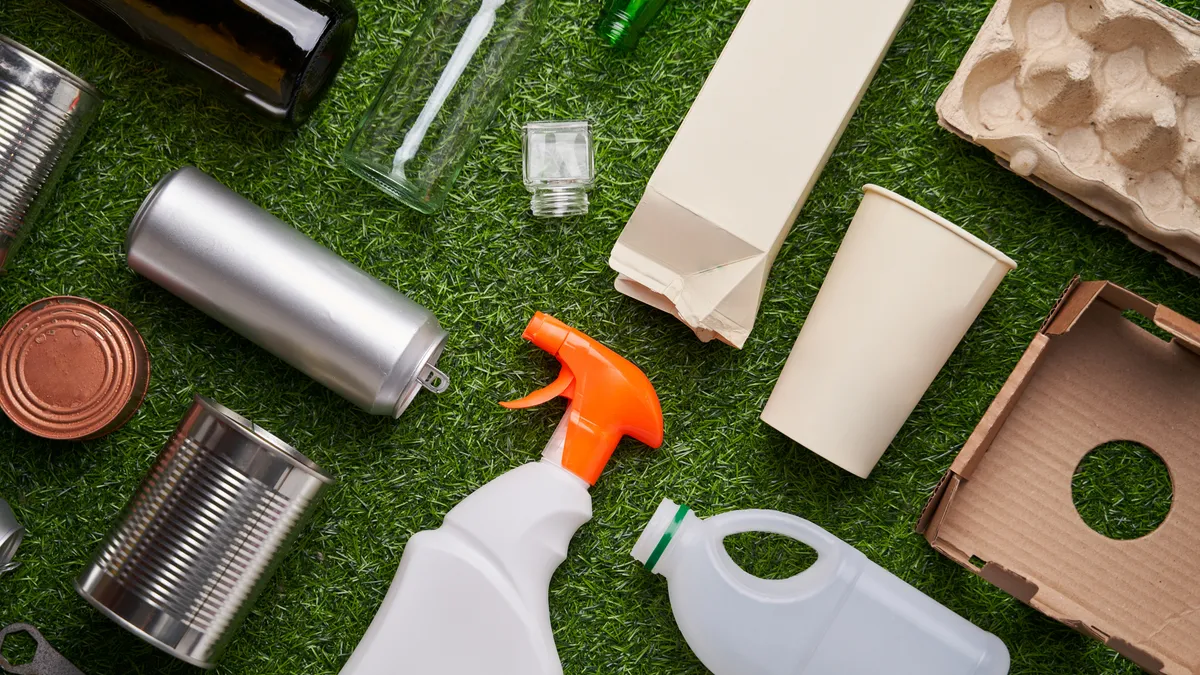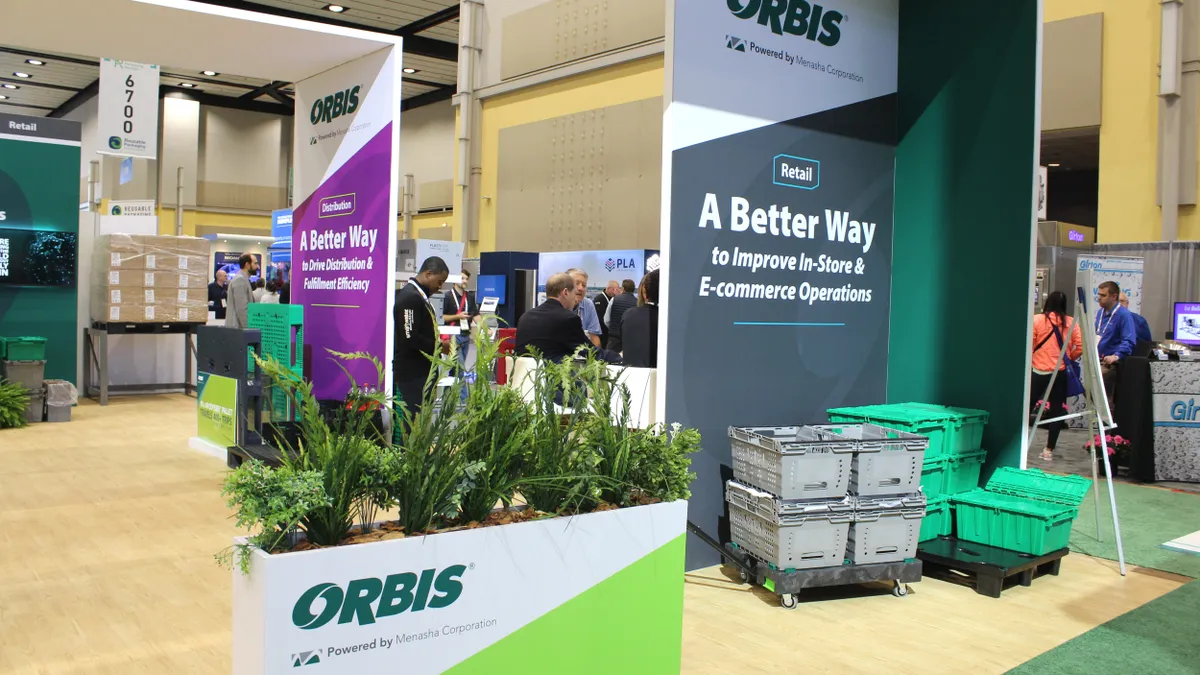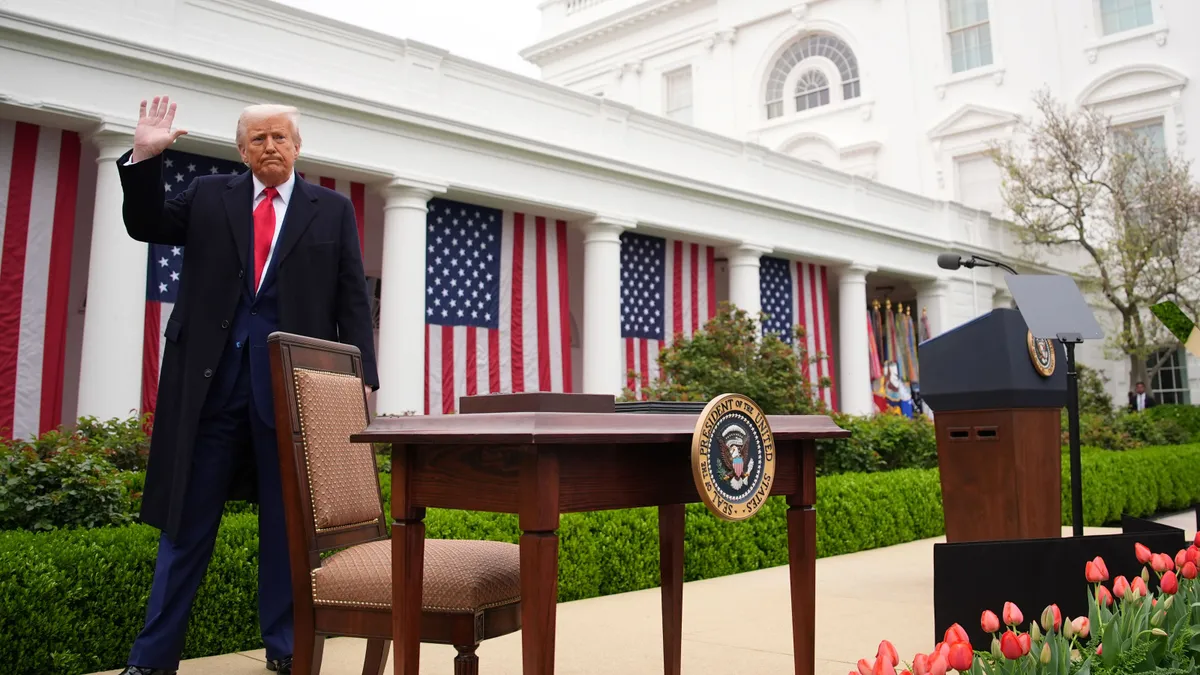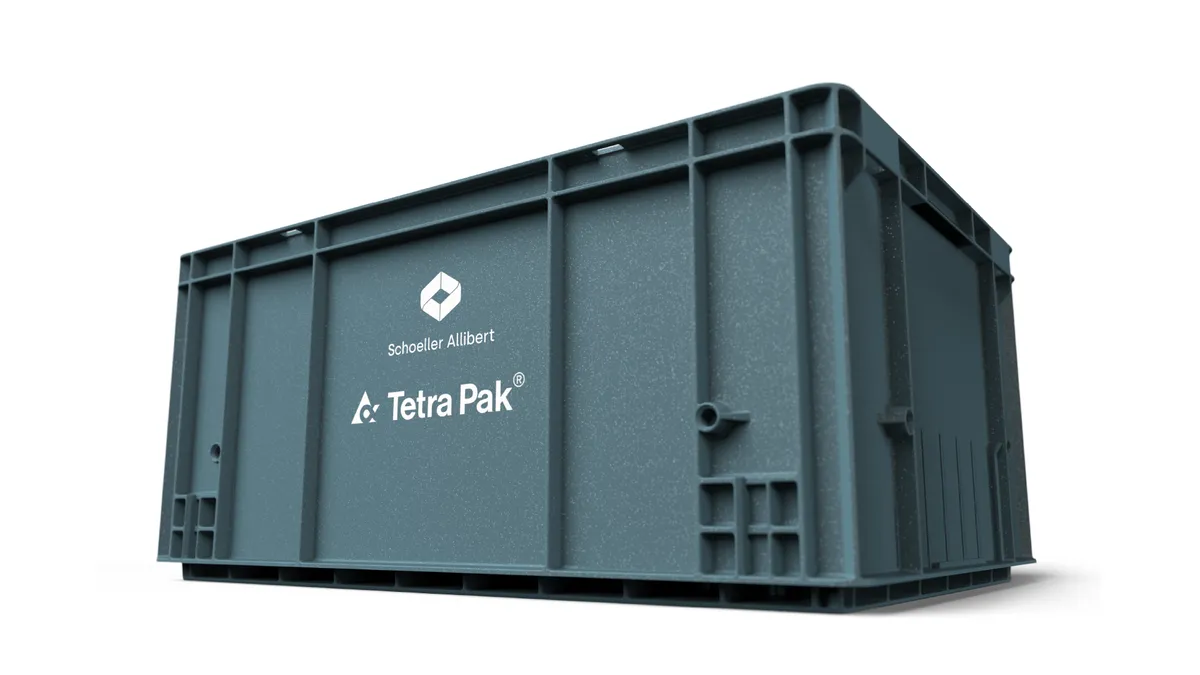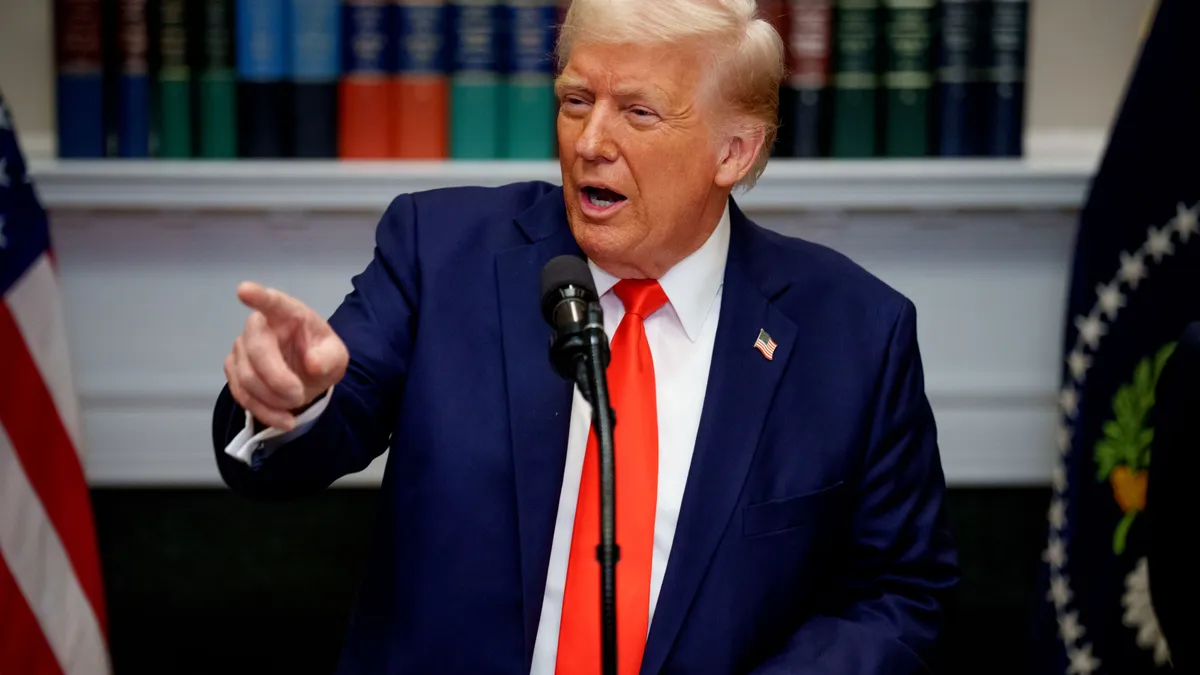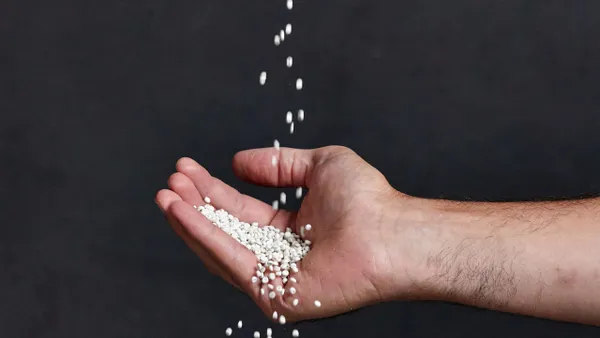Comedian and actor Retta might be best known for her role on the TV show Parks and Recreation, but she’s already making waves in her new role: The Paper and Packaging Board’s “papertarian” marketing campaign that launched in April.
P+PB is a commodity checkoff program, a national marketing initiative that promotes and provides information about an agricultural commodity without referencing specific producers or brands. Industry funds the program and the U.S. Department of Agriculture oversees it. The goal is to promote and create public preference for paper, especially by highlighting paper products’ sustainability and recyclability.
Packaging Dive spoke with Mary Anne Hansan, president of P+PB, about the group’s overall work and “adjustments to respond to the marketplace,” as well as the impact it has seen so far from the papertarian campaign.
This interview has been edited for length and clarity.
PACKAGING DIVE: Tell me about the significance of the papertarian campaign, including landing such a high profile spokesperson as Retta.
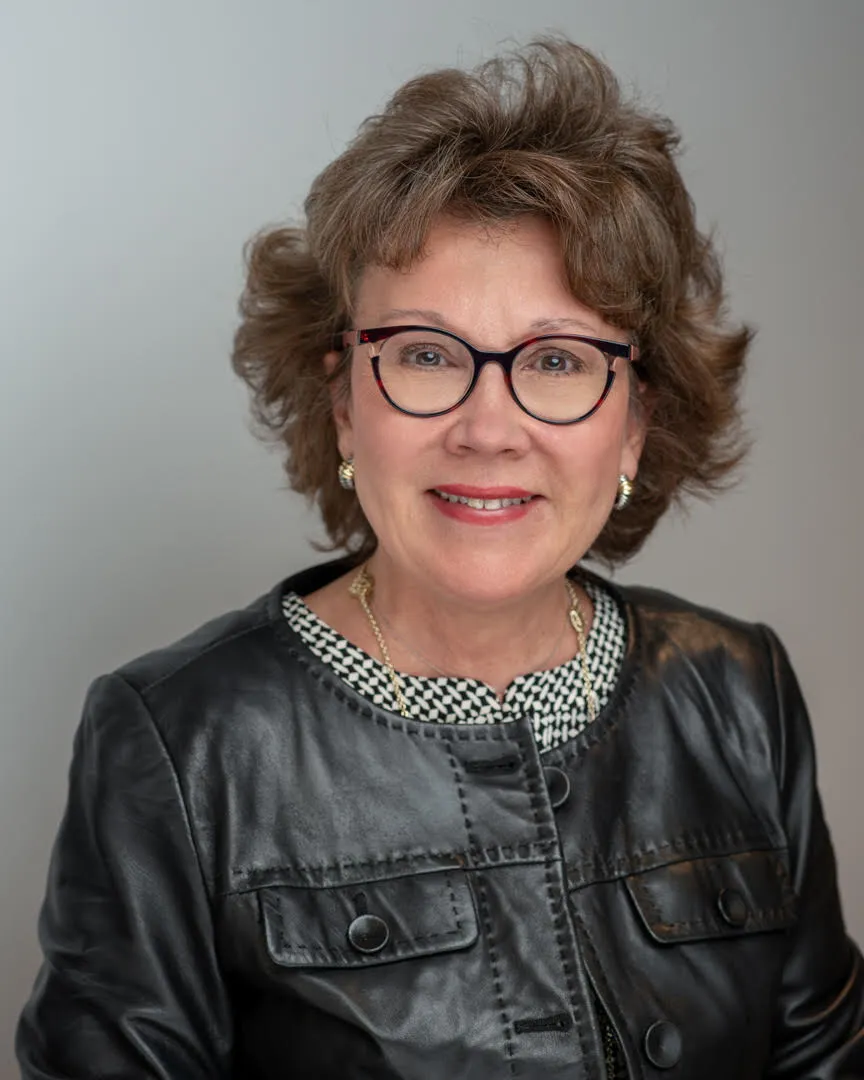
MARY ANNE HANSAN: As a result of partnering with a celebrity, we're definitely seeing a lift in our numbers that we might not see in just our regular day-to-day work. We have seen a big lift in our video completion numbers, our social posts.
What we really wanted to do with our program this year is move beyond talking about some of these sustainability benefits and try to move people to a point of preference. We wanted to align ourselves with someone that could help us carry that message but do it in a way where it wasn't this big guilt trip, it was fun and it was something that you would want to show your friends and say, “Hey, I'm going to be a papertarian, and you should be, too.”
It’s based on this idea that when I choose paper or a paper-based packaging option, I’m making a smart choice for the environment. We wanted to get people from just hearing this message to actually visibly showing in the marketplace that this is something that they're really committed to. We wanted to tap into that part of their personality that wants to do the right thing and wants to make their imprint on the world. Being a papertarian is an easy way to do this.
It kind of plays to consumers’ desire to identify with somebody else that's like that. So the choice of Retta became really easy. We looked at a wide swath of actors and actresses, and we started to focus more heavily on humor as part of the delivery message. Retta came across as such a natural with a very fun sense of humor. She’s not lecturing, she’s approachable and she was really excited about not only the products that we make but also was excited to be part of a message to use more paper because it is a better choice for the planet.
She’s been terrific to work with. Retta is also promoting the campaign on her social feed, and she reaches millions of people. She’s somebody that’s got what I would call street cred in the marketplace. People like her. They find her funny, and she delivers a message in a very entertaining way.
How does the Paper and Packaging Board provide value, especially any unique characteristics that set it apart from other industry groups?
What the industry did back in 2012, and it took about two years, is they got together and felt that they needed to have a voice as an industry in the consumer marketplace. This is not unlike what a lot of agriculture programs do through the USDA — there are programs out there today for peanuts, eggs, beef, dairy, pork. A lot of iconic, classic advertising campaigns that we know as consumers have come together because industries like ours band together for the purposes of advertising.
So when a majority of those folks who are eligible say “yes we want to do this,” then the industry, with the help of USDA, gets a law passed that basically makes it so that everybody over a certain size and who makes certain products has to contribute to that program. Our program went into effect in 2014.
And then the industry made a pivot into a much more sustainability-oriented campaign back in 2021.
Explain in more detail how sustainability plays into the Paper and Packaging Board’s work.
When we started the communications around the program back in 2014, we saw through our research that sustainability was on the minds of consumers but not at an [extraordinarily] high rate. We were seeing a lot of challenges to using paper in the marketplace.
Consumers need to be reminded about the value of paper, everything from the tactile qualities of it to all the senses it touches. So we were really focused on product benefits. On the packaging side, we were very focused on everything from safety and privacy of different packaging to making sure that you are getting the things that you want and they were in good shape. These stories really resonated with consumers.
In that same time period, what our companies were seeing with their customers was more and more interest in sustainability-related messaging. This, of course, corresponded with the growing concern by consumers about climate change and climate impact. At the same time, we were seeing the shift at the customer level responding to materials like plastics, for example, that consumers are getting much more anxious about. So the market that we entered in 2015, when we finally got our first campaign message out, was very oriented to how people interacted with and wanted and used paper packaging in their lives.
In 2019 ... our board had said we really need to understand how we communicate the sustainability of our packaging, which differentiates us from so many materials. It’s a great story for the environment. So we did all the research and did a lot of message testing and a lot of looking at consumers’ concerns to develop a platform of messaging that we thought would address their key concerns about the paper industry — and would position our material for all of those packaging adjustments that were coming down the road with, for example, the laws in Europe and the push to get rid of single-use plastics.
A lot of things started to change very quickly. We felt we could have a pure-play focus and have market impact by riding those innovation waves, whether it’s molded pulp or something else, where brands are actively switching away from plastics. That gave us the confidence we could move forward and be successful, and we got all of the new messaging in the market in 2021.
Spinning off of the shift away from plastics that you mentioned, is that trend enough to offset the general declines in paper volumes, such as with newsprint and due to lightweighting?
I don't have a lot of hard data on it, but I don't think moving to paper-based alternatives, at least today, is going to offset the decline in just normal paper usage — copy paper, note cards, things like that. I do think that sustainability messaging will make consumers feel good about their paper use when they want to use it.
Paper [usage] has really declined. COVID was very, very hard on the paper industry, and we saw a drop in our assessments by almost 50%, which is huge for a sector as big as paper. On the paper side, we’re just trying to dig out of the COVID hole and try to get closer to where we were, but there are a lot of other forces in the marketplace, including supply chain disruptions.
But what I've seen in our data is that certain sectors of the industry have gained in volume, like the corrugated containerboard side. Paperboard — that's your folding cartons and boxboard, etc. — we've seen a lot of consistency in their numbers over the years. I do think plastics deselection, moving from plastic to paper-based material, will strengthen the paperboard side of the business, for sure. And the consumer trends around e-commerce.
So corrugated boxes are, I think, in a position to stay strong even though the economy is softening and we’ve seen some declines on the corrugated side.
A notable amount of new box production capacity is coming online. Do you anticipate that will have an effect on the industry as a whole?
It's going to be a tough thing when you've got a softening market and there's more production in the marketplace to be absorbed. It's kind of anyone's guess on how that's going to land. And again, corrugated — and containerboard especially — are very sensitive to the broader GDP and what's going on in the economy. I think there's room for everyone if we don't go into some kind of full-fledged recession. If we went into a very deep recession ... I would say corrugated boxes would see it first, and that could definitely be a disruption. We’ll have to wait and see.
States are beginning to launch, or at least examine, extended producer responsibility programs for packaging. What are your thoughts on this kind of EPR in the U.S.?
I know it's a big legislative and regulatory concern to the industry. But as a marketing organization, we don't get involved in any kind of legislative or lobbying activities; that's a really important criteria of working with USDA.
But what I can tell you is we know that recycling is a very important part of our message. All of the work we're doing to talk about the recyclability of paper ... that's a really, really important sustainability message to the consumers, that it's not waste if it's recyclable.
Programs like the ones we run at the Paper and Packaging Board are not being done for legislative reasons, they're being done because it's part of who we are. States can look at programs that are working, not just what isn't working, and this industry has a great story to tell. We've got a great recycling rate, 68%, and we're trying to get even more of that recycling recaptured and get it back in the system. And then the industry itself has spent an estimated $5 billion in building infrastructure through 2023. So we've got a real success story when it comes to recycling.
With EPR, it's really focused on where those successes aren't happening. I think if you ask companies in our industry, they would like those states to know that we are already doing the hard work of recapturing and recycling products and doing it really, really well.



